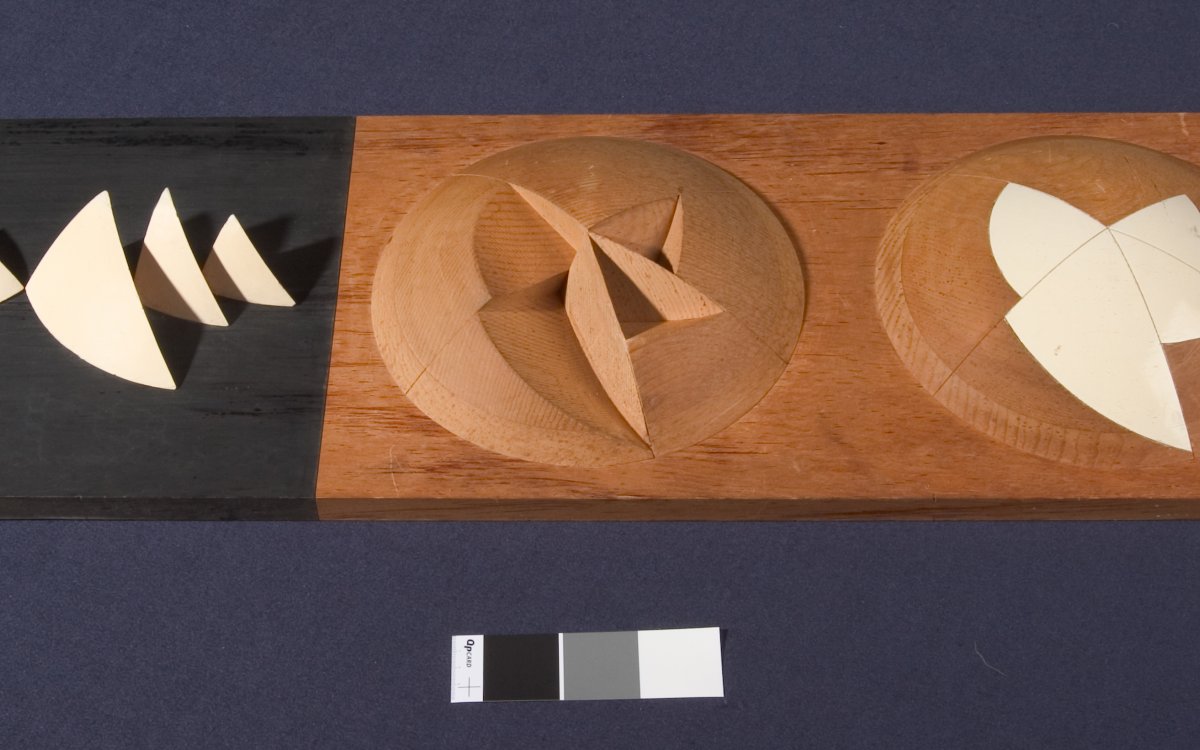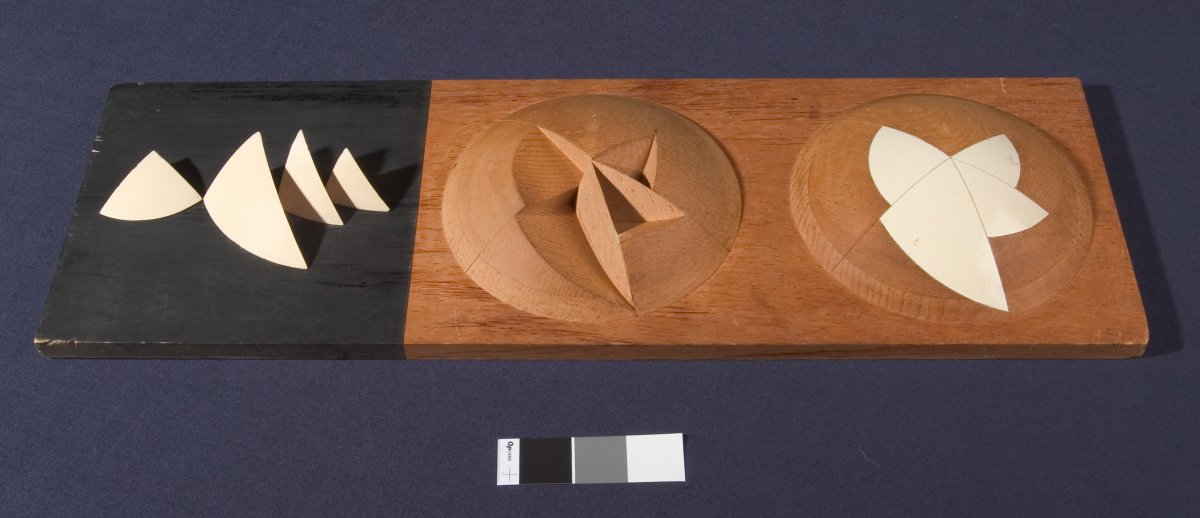In 1957, Danish architect Jørn Utzon (1918–2008) was announced as the winner of an international design competition for a Sydney opera house, to be built at Bennelong Point.
Utzon’s wooden design model for the Sydney Opera House is part of a collection that was presented to the National Library of Australia by Professor Henry Ingram Ashworth (1907–1991). Ashworth had been one of the judges in the design competition and was involved in the building’s construction.
Utzon’s design was ahead of its time. For the architect’s vision to be successful, untried structural solutions had to be devised throughout the construction. It was the era before computer-aided design and the architectural model demonstrates how Utzon solved a construction design problem. Utzon’s assistant, Helge Hjertholm, recalled that early one morning in 1961, Utzon came into his office with an orange. By slicing spherical triangles from the orange peel, Utzon could create a variety of shells. Utzon realised that all segments of the roof could come from a single sphere. The shell segments could be separated into individual components, prefabricated and then assembled on site.

Utzon, Jørn, 1918-2008. (1961). [Architects model for the geometry of the Sydney Opera House shells] [realia]. http://nla.gov.au/nla.obj-139591596
1. With your students, discuss the process of design and the role of architects. How do buildings happen? As a class, use the following questions to discuss architectural design as it relates to significant public buildings:
- Why are some buildings less ‘traditional’ in design than others?
- How important is the way a building looks?
- What other things do architects take into account when designing a building?
Ask your students to research and make a ‘mood board’ of architecturally significant buildings around the world (e.g. the Guggenheim Museums in New York City, Bilbao, Abu Dhabi and other cities around the world, La Sagrada Familia in Spain, the Centre Pompidou in France) and their architects.
Watch the vimeo The ABC of Architects and see how many of the buildings identified by your students are featured.
2. Watch this video about the Architects Model for the Geometry of the Sydney Opera House Shells, 1961 with your students.
Use the following questions to shape an enquiry.
- Describe the materials used in this object’s construction.
- How did the object come to be in the National Library of Australia’s collection?
- Discover and describe how this object was constructed.
Ask students discover more about Jørn Utzon and the international competition to design a world-class performing arts centre for Sydney.
3. Ask students to cut up an orange and consider how it influenced Utzon’s design. What else might have influenced the design? What does the shape of the Opera House remind you of?
4. As a class, explore what it means to be on the UNESCO World Heritage List. Why do you think the Opera House is on this list?On the Department of the Environment website, you can read the criteria for World Heritage Listing. Ask students if they can think of a place (natural or built) that they consider worthy of World Heritage Listing. Select one or two of the suggestions and discuss as a group how these places meet the criteria.
5. Why is the Sydney Opera House significant to Australia today? Invite students to look at the Opera House website and its ‘Events’ page.
6. Ask students to search for historical images (e.g. photographs, paintings, maps) of Bennelong Point. As a class, use the images to create a visual timeline for Bennelong Point. Discuss how the area has changed between the arrival of the first European settlers and the present.
7. Invite students to participate in a class ‘design competition’. You could limit the design to a building with a particular use (such as a new school library or gymnasium) or you could encourage students to create a competition design brief, explaining how a new building would be used. In preparing their designs, ask students to think about the types of materials they would use in the building’s construction.
